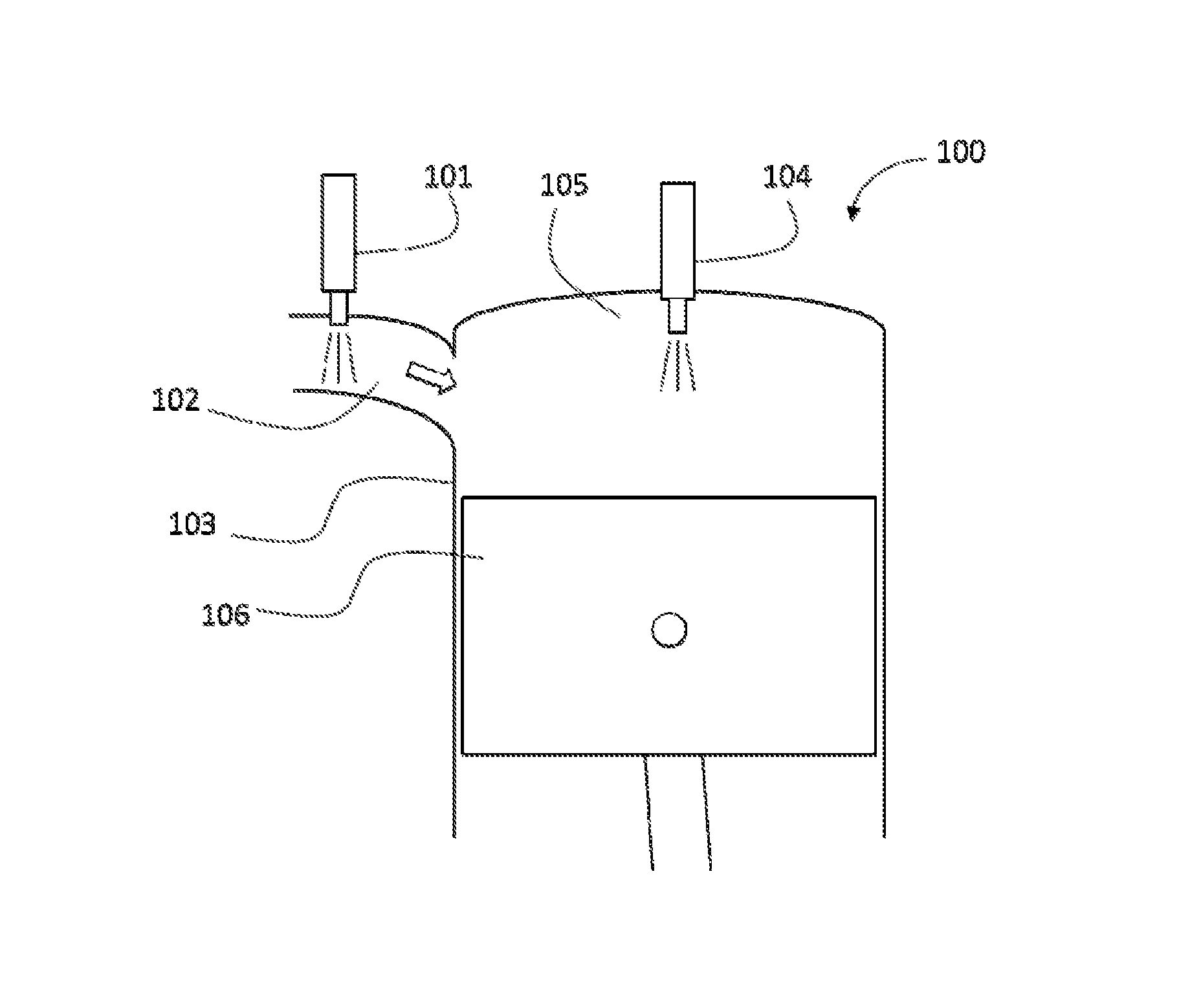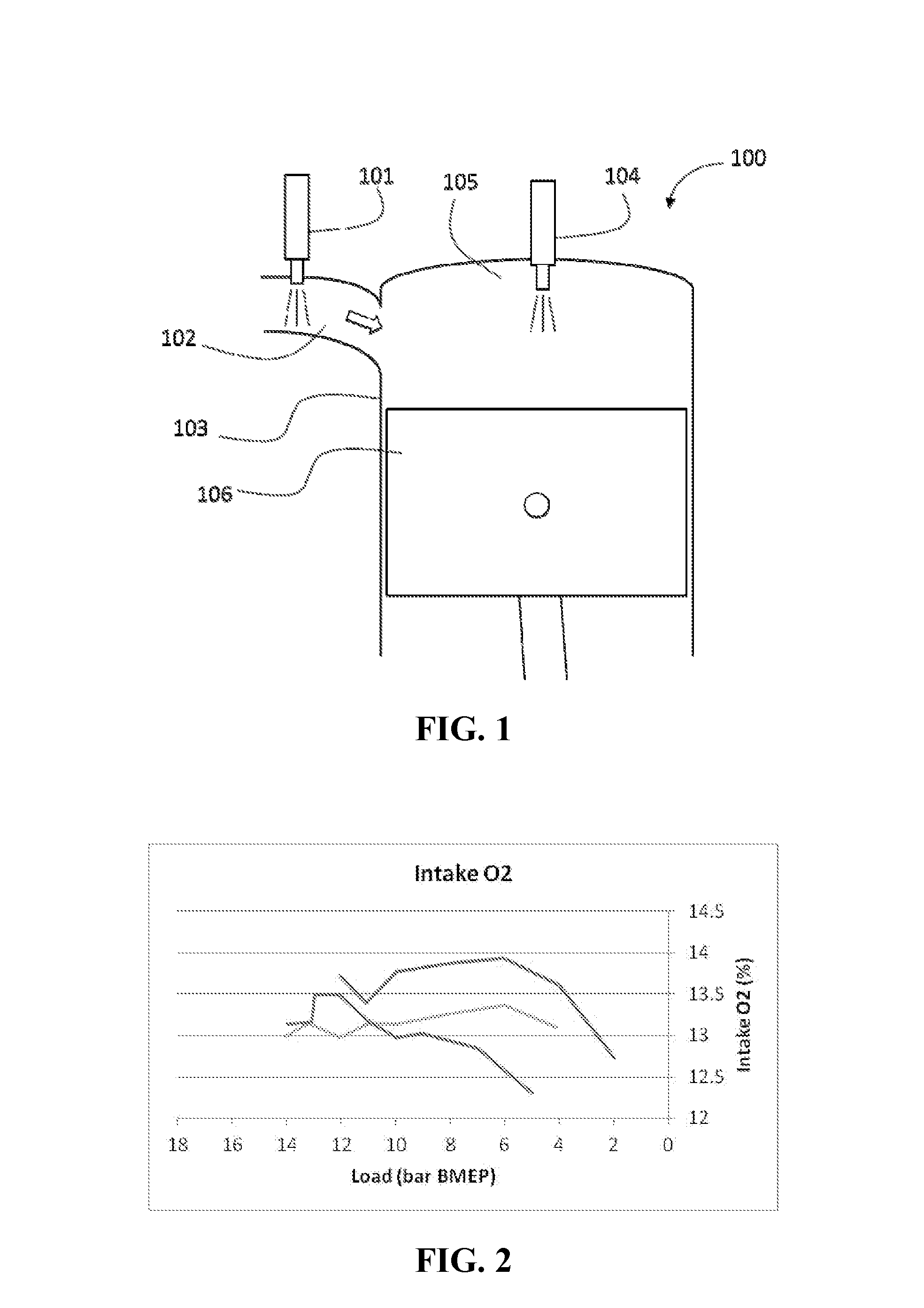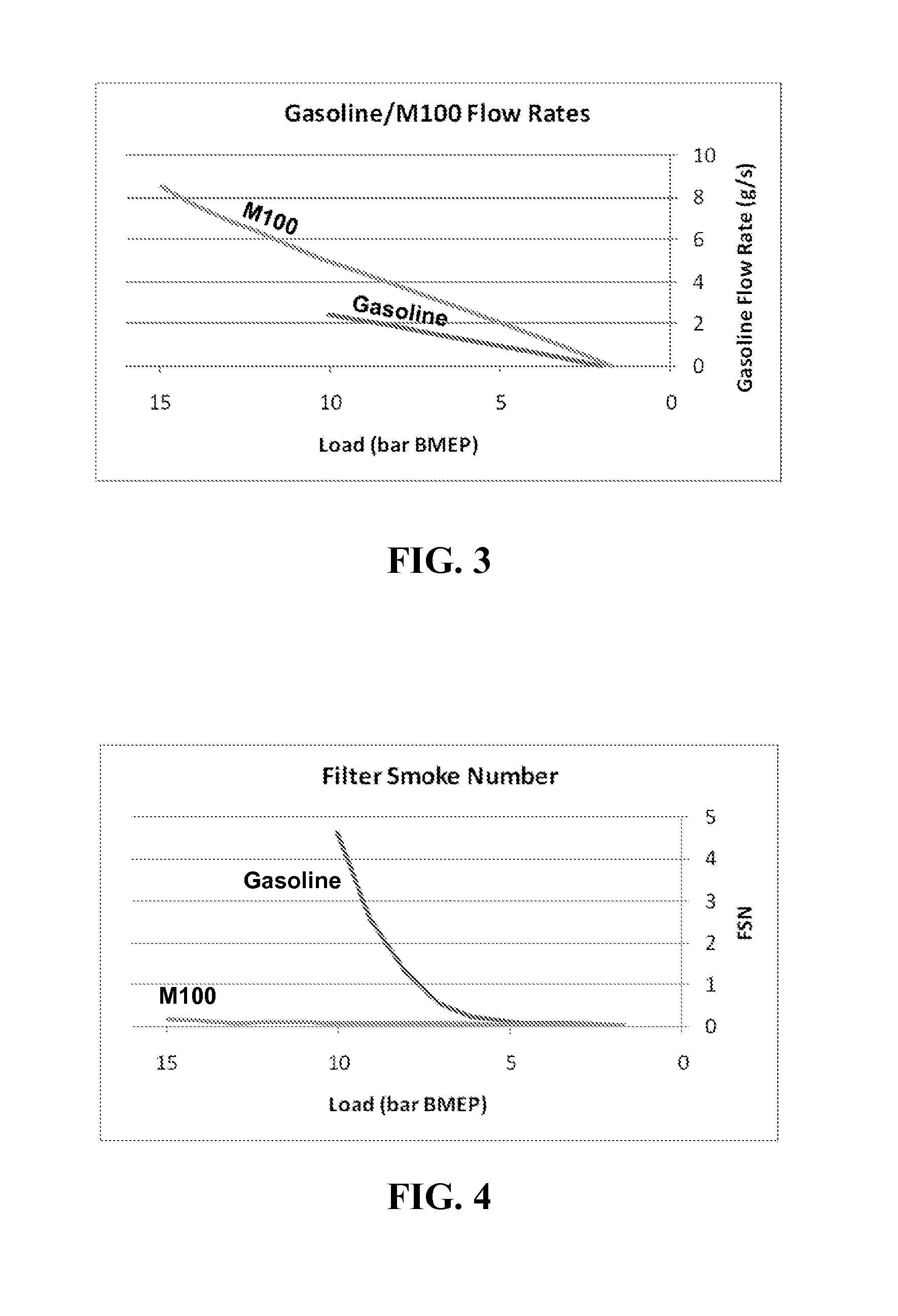Low Temperature Dual Fuel Combustion Utilizing Diesel and Methanol Fuels
a dual fuel and low temperature technology, applied in combustion engines, machines/engines, electric control, etc., can solve the problem of over-use of diesel fuel, achieve low nor emissions, reduce charge air oxygen levels, and high fuel efficiency
- Summary
- Abstract
- Description
- Claims
- Application Information
AI Technical Summary
Benefits of technology
Problems solved by technology
Method used
Image
Examples
Embodiment Construction
[0019]Referring now to FIG. 1, a portion of a compression ignition engine 100 includes port injector 101, intake manifold 102, engine cylinder 103, direct injector 104, combustion chamber 105, and piston 106. Other components not essential to an understanding of the invention are omitted. The engine may include a single cylinder 103 or a plurality of cylinders each configured as shown.
[0020]Port injector 101 is situated with an outlet into intake manifold 102. Port injector 101 is provided to inject the complement fuel (methanol) into the charge air as it enters the engine cylinder 103. Direct injector 104 is situated with an outlet into combustion chamber 105 (which includes part of the upper portion of engine cylinder 103 not swept by piston 106). Direct injector 104 is provided to inject diesel fuel into combustion chamber 105 when ignition is desired.
[0021]In operation, piston 106 reciprocates in cylinder 103 according to the well known four-stroke cycle. During the intake strok...
PUM
 Login to View More
Login to View More Abstract
Description
Claims
Application Information
 Login to View More
Login to View More - R&D Engineer
- R&D Manager
- IP Professional
- Industry Leading Data Capabilities
- Powerful AI technology
- Patent DNA Extraction
Browse by: Latest US Patents, China's latest patents, Technical Efficacy Thesaurus, Application Domain, Technology Topic, Popular Technical Reports.
© 2024 PatSnap. All rights reserved.Legal|Privacy policy|Modern Slavery Act Transparency Statement|Sitemap|About US| Contact US: help@patsnap.com










